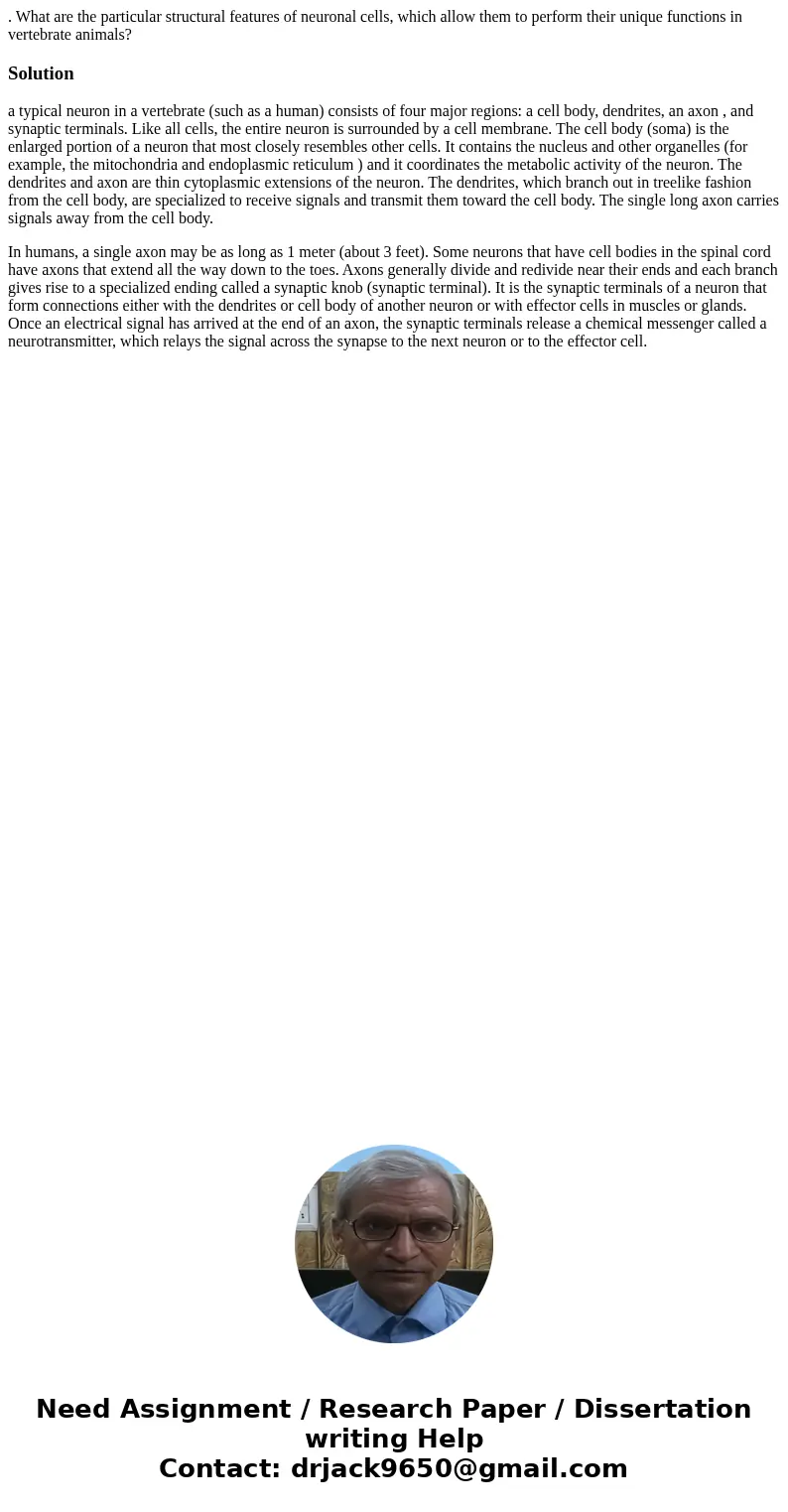What are the particular structural features of neuronal cel
. What are the particular structural features of neuronal cells, which allow them to perform their unique functions in vertebrate animals?
Solution
a typical neuron in a vertebrate (such as a human) consists of four major regions: a cell body, dendrites, an axon , and synaptic terminals. Like all cells, the entire neuron is surrounded by a cell membrane. The cell body (soma) is the enlarged portion of a neuron that most closely resembles other cells. It contains the nucleus and other organelles (for example, the mitochondria and endoplasmic reticulum ) and it coordinates the metabolic activity of the neuron. The dendrites and axon are thin cytoplasmic extensions of the neuron. The dendrites, which branch out in treelike fashion from the cell body, are specialized to receive signals and transmit them toward the cell body. The single long axon carries signals away from the cell body.
In humans, a single axon may be as long as 1 meter (about 3 feet). Some neurons that have cell bodies in the spinal cord have axons that extend all the way down to the toes. Axons generally divide and redivide near their ends and each branch gives rise to a specialized ending called a synaptic knob (synaptic terminal). It is the synaptic terminals of a neuron that form connections either with the dendrites or cell body of another neuron or with effector cells in muscles or glands. Once an electrical signal has arrived at the end of an axon, the synaptic terminals release a chemical messenger called a neurotransmitter, which relays the signal across the synapse to the next neuron or to the effector cell.

 Homework Sourse
Homework Sourse